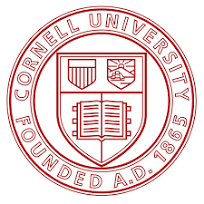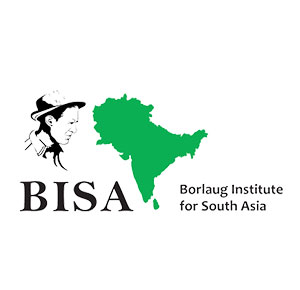Crop Protection
Major Research Thrusts
- Identification of new and diverse sources of resistance against major diseases and insect-pests with emphasis on multiple disease/insect-pest resistance
- Crop health monitoring for diseases and insect-pest incidence by roving surveys
- Devising pest-management strategies through tillage options, chemical control and integrated pest management options
- Creating national repository of pathotypes of different rust pathogens
- Epidemiological studies in relation to changing climatic scenario
- Integrating molecular tools for understanding variability in pathogens
- Post harvest analysis for disease and insect infestation and devising appropriate management strategies
Research Achievements
- Losses due to wheat and barley rusts have been minimized. There had been no wheat and barley rust epidemic during recent years. It was possible due to the vigilance, coordination efforts of ICAR/IIWBR, SAUs and State Dept. of Agriculture, monitoring pathotypes, evaluation of Advance Varietal Trial material and deployment of diverse rust resistant varieties.
- Sequenced the genome of the indigenous pathogen of Karnal Bunt disease caused by a fungus Tilletia indica (Syn. Neovosia indica). The draft size of KB strains PSWKBGH-1, PSWKBGH-2 and PSWKBGH-3 were 37,460,344 bp, 37,216,861 bp and 43,736,665 bp, respectively.
- Sequenced about 100 mb genome of wheat brown rust (Puccinia triticina) fungus
- Virulence based phenotypic and genotypic population differentiation of 48 pathotypes of wheat leaf rust fungus Puccinia triticina from Indian subcontinent.
- A new Lr gene was catalogued on 2DS chromosome which confers resistance to all the virulent and predominant pathotypes of triticina in India.
- Developed of transcriptome based markers for leaf/brown rust pathogen
- Occurrence of wheat rusts and pathotype distribution were monitored regularly. During this period more than 4000 samples of wheat rusts were analyzed and pathotype distribution was mapped. Five new pathotypes of Puccinia striiformis sp. tritici (110S119, 238S119, 110S84, 7S0 and 6S0) were identified and confirmed based on differentials and microsatellite markers.
- Rust resistance sources to the new pathotypes were also identified. Among which pt. 110S119 has increased to 24% of the samples and ranks second in predominance. Shift in predominance of pathotype of wheat brown rust in favour of 77-9 has occurred. Virulence for Sr31 has not been observed in India. All the AVT material of wheat and barley were evaluated and rust resistance genes in all the AVT materials were documented.
- SSR marker are being developed from the EST or whole genome sequence data for the wheat smut pathogens from the closely related species Ustilago hordei. The SSRs from Ustilago hordei are being used to analyse variability among wheat smut pathogens as they are highly transferable cross closely related species. Total 8226 SSR motifs have been identified consisting Mono, di, tri, tetra, penta and hexa repeats. Primers for 36 randomly selected SSR motifs have been custom synthesized and will be used for variability in wheat smut pathogens.
- Fourteen barley genotypes were identified as moderately resistant (BCU7600, BCU7624, BCU7628, BCU7629 BCU7640, BCU7649, BCU7651, BCU7652, BCU7653, BCU7659, BCU7721, BCU7916, BCU7842 and BCU7746) for corn leaf aphid resistant and one was categorized as resistant (BCU7635) during a study conducted at IIWBR from 2013 to 2015.
- In insecticide testing trial, three insecticides; flubendamide 480 SC @20g a.i./ha,thiamethoxam 25WG @ 12.5g a.i./ha and chlorantranilipride18.5 SC @20g a.i./ha were found quite effective against foliar aphids in wheat.
- Application of entomopathogenic fungi viz., Metarhizium anisopliae15% WP @ 4g/l Verticillium lecanii 1.15% WP @ 4 g/l was found effective in management of foliar aphid complex in wheat.
Technologies developed
Rust Management
Spray the crop with propiconazole (Tilt 25 EC @ 0.1 per cent) at stripe rust initiation is recommended. Usually, it is required during January-February. Same chemical has been recommended for other rusts (stem and leaf rusts).
Loose smut
Seed treatment with Carboxin (75 WP @ 2.5 gm/kg seed) or Carbendazim (50 WP @ 2.5 gm/kg seed) or Tebuconazole (2DS @ 1.25 gm/kg seed) or a combination of a reduced dosage of Carboxin (75 WP @ 1.25 gm/kg seed) and a bioagent fungus Trichoderma viride (@ 4 gm/kg seed) is recommended. Integrated management of loose smut involving reduced dosage of chemical fungicide and bioagent fungus is more eco-friendly and equally effective as the chemical control measures and thus should be preferred. Use of bioagents also helps in improving the initial vigour of the crop. Seed treatment with fungicide should be done one or two days before sowing. In case of integrated management, the treatment with t.viride should be done 72 hrs before sowing, followed by the fungicide, 24 hours before sowing.
Karnal bunt
For producing KB free wheat, farmers are advised to grow KB resistant varieties recommended for the respective area. In areas where Karnal bunt incidence is low, by growing durum wheat for 2-3 years, fields can become free from Karnal bunt pathogen, Tilletia indica. One spray of Propiconazole 25EC (Tilt 25 EC) @ 0.1 per cent or Tebuconazole 250 EC (Folicur 250 EC) @ 0.1 per cent be given in mid February to control the disease.
Powdery mildew
For powdery mildew control, one spray of propiconazole (Tilt 25 EC) @ 0.1 % at ear head emergence or appearance of disease (whichever is earlier) is recommended for the powdery mildew prone areas.
Flag smut
Flag smut disease also poses problems in isolated fields in Punjab, Haryana, Rajasthan and some other parts of NWPZ. Disease management measures taken for the control of loose smut disease (as discussed above), prove to be effective against flag smut too. Hence, seed treatment with carboxin or tebuconazole may be followed in fields with flag smut history.
Termite
In the termite prone areas, seed treatment with chlorpyriphos @ 0.9g a.i /kg seed, be taken up for their management. Seed treatment with thiamethoxam 70WS (Cruiser 70WS) @ 0.7 g a.i./kg seed or Fipronil (Regent 5FS @ 0.3 g a.i./kg seed) is also very effective. In the standing crop, the broadcasting of the insecticide treated soil 15 DAS be practiced. For this, chloropyriphos @ 3 Litre mixed in 50 Kg soil be used for one hectare field. Crop planted under FIRBS is more prone to termite attack in the termite-prone areas, while zero tillage shows less termite damage. Hence, proper attention should be given in crop planted under FIRBS.
The IPM module developed and validated in NWPZ can be adopted in parts of north-west plain zone. This involves the seed treatment with T.viride (@4g/kg seed) + carboxin (75WP @1.25g/kg seed) or tebuconazole (@ 1.0g/kg seed) for the control of loose smut, followed by broadcast of insecticide treated soil (with chloropyriphos @ 3L/ha) at 15DAS for termites.
Aphids: For the management of aphids, foliar spray of imidacloprid 200SL @20g a.i./ha on border rows at the start of the aphid colonization be given. This will help in protection of the bioagent insect, the lady bird beetle inside the field which feeds on aphids.
Pink Stem Borer: The incidence of pink stem borer is observed more in fields of rice-wheat cropping system where wheat is sown in zero tillage fields. For its management, foliar spray of quinalphos (Ecalux) 800 ml /acre as soon as pink stem borer is seen. Irrigation also help in reducing the pink stem borer damage.
Ear cockle
Ear cockle is an important disease in eastern parts of India, hence proper precautions be taken, especially in eastern U.P., Bihar and Jharkhand. Wider publicity should be given by extension agencies on the use of gall-free seed, well before the sowings. Farmers should adopt floatation technique for the separation of galls from the infested seed lots. The infested seed lot should be floated in 2 percent brine solution for this purpose. The galls will float on the surface. These should be separated and destroyed away from the field by burning. The seed should be thoroughly washed to remove the salt solution before sowing.
Facilities Available
- Facilities available for identification of diseases pathogens and insects, mass-multiplication of pathogen and rearing of insects and for conducting molecular studies
- BOD incubators
- High resolution microscopes
- Laminar air flow
- Thermal cycler
- Gel-doc system
- Horizontal and vertical electrophoresis units,
- Incubator shaker
- Polyhouse
- Nethouse










